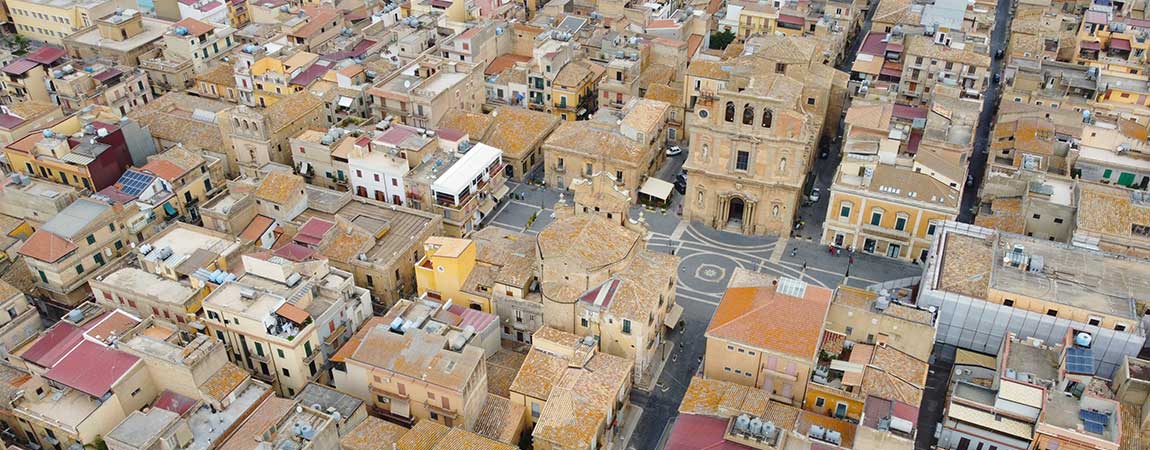
In the province of Caltanissetta there are several tourist locations to include in your favorite itinerary such as Niscemi.
Rich in monuments and places of interest, Niscemi it has had a history full of ideas and extraordinary events.
Niscemi's story
Niscemi is a municipality of 25 thousand inhabitants located in the province of Caltanissetta at approximately 330 meters above sea level. The origins and the story of Niscemi they begin with the first settlements dating back to the Neolithic era, between the XNUMXrd and XNUMXnd millennium BC
This historical reconstruction was possible thanks to the testimonies and traces that have been left by the numerous oven tombs dug into the rock present in the peripheral area of Niscemi. These territories were probably inhabited by Sicani who lived mostly in straw huts and devoted themselves exclusively to hunting and agriculture. There were other communities that alternated over the centuries up to the fifth century BC, with the territory of Niscemi, and more generally all of Sicily, which was put in difficulty by the invasions of the Carthaginian people. During these centuries, but also in those following the birth of Jesus Christ, the community has never developed completely, probably also due to the alternation of the various dominations.
The foundation and arrival of the Normans
The history of Niscemi had a turning point during the period in which all of Sicily was affected by the conquest by the Normans. In particular, in the year 1143 a new city was founded which was given the name of Nixenum. It developed above all as a rustic fiefdom but in 1324, thanks to the arrival of the Branciforte family, became a suitable land to develop an important community. In 1624, Giovanna Branciforte took possession of the entire barony and asked for permission to be able to form a community in all respects.
The territory foresaw the incorporation of four feuds with the center of the village which was located near the forest of Castellana which is also famous for its legend of the discovery of the painting of the Madonna. During the seventeenth century, there were several innovations for the village and specifically in 1640, Prince Branciforte decided to change the urban layout by designing a new plan that finally provided for the presence of a large central square, around which life developed social and also the construction of the Mother Church. Unfortunately, the built village was immediately damaged in 1693 by the powerful earthquake that struck the entire Noto valley. An important reconstruction work was carried out which, however, went on slowly so much so that there are chronicles from the year 1838, according to which, King Ferdinand II, had the opportunity to complain about the local administration and the state of the roads while he was in go through Niscemi. In 1848 Niscemi took part in the popular insurrection against the Bourbon government and in 1860 he also joined the Garibaldi revolution which then led to the unification of Italy.
What to see in Niscemi
On the territory of Niscemi there are various architectures and buildings to visit such as the church of Santa Maria d'Itria which, precisely, was completely rebuilt after the earthquake of 1693. Equally beautiful and evocative is the church of the Addolorata whose foundation dates back to the year 1750: it is characterized by an external façade with eighteenth-century façades in Baroque style. Continuing in the overview of religious buildings present in the territory of city of Niscemi, cannot fail to be mentioned as well shrine of Maria Santissima del Bosco, church of Sant'Antonio da Padova , Church of St. Joseph. As far as the civil buildings are concerned, they are only particularly interesting Branciforte Palace which is also the oldest in the whole area and the City Palace which today is the seat of the municipal chancellery.
How to get to Niscemi
To get to Niscemi starting from Palermo, it is necessary to cover 196 km for which the journey must take about 170 minutes, crossing the A19 motorway and the E392 road. Starting from Caltanissetta, on the other hand, there are 77 kilometers to travel for about 70 minutes of travel along the state road 626 and then the state road 190.
© Image by Gianfranco DiPietro, CC BY-SA 4.0, via Wikimedia Commons









